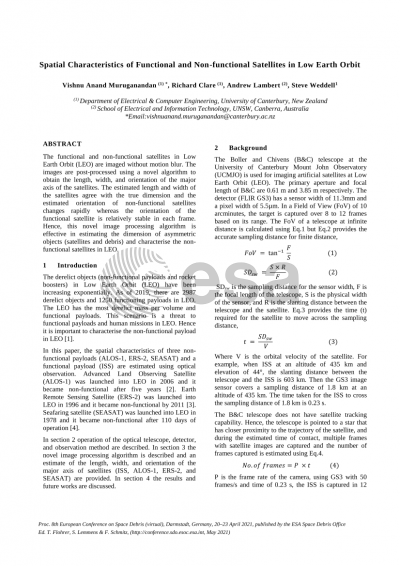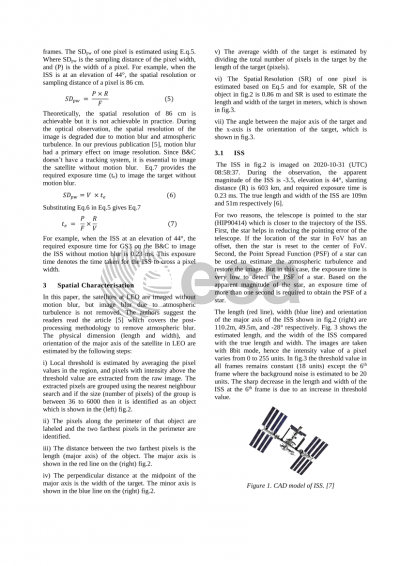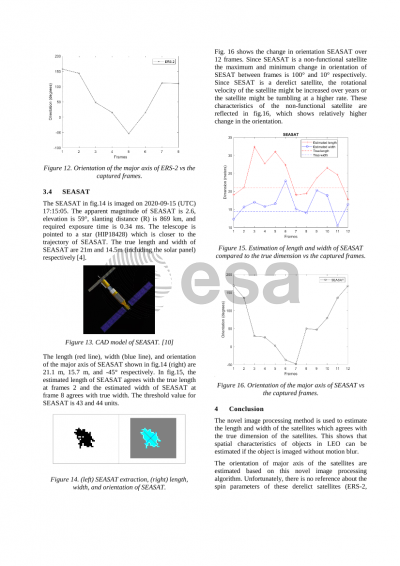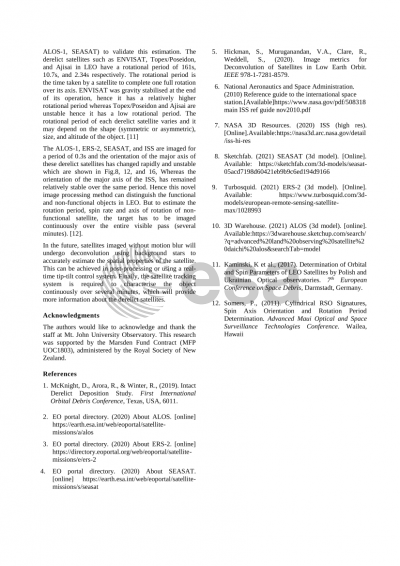Document details

Abstract
The B&C telescope at Mount John University Observatory (MJUO) is used for imaging satellites and space debris in Low Earth Orbit (LEO). Based on the aperture (0.61 m) and a focal length (3.85 m) of the B&C and pixel size (5.5 µm) of the camera, objects at an altitude of 400 to 1000 km can be imaged with a spatial resolution of 57 to 143 cm respectively. However, the image resolution is blurred during the observation due to atmospheric turbulence. To improve spatial resolution, the LEO objects are imaged against background stars. Since the star is a point source at infinite distance, the perturbed Point Spread Function (PSF) of the star is useful in determining the turbulent condition of the atmosphere. Using prior knowledge (PSF of the star), the LEO objects in the foreground are deconvolved using post-processing algorithms to improve spatial resolution.
It is crucial to identify a star as close to, i.e., a few arcseconds, the trajectory of a LEO object as possible. If the angular distance between the star and target is too large, then the star and target do not encounter a similar volume of atmospheric turbulence. Stars brighter than an apparent magnitude of eight have high sky coverage for identification of a reference star over the trajectory of the target. The star density is higher in the galactic plane, hence there is high probability of finding a reference star when the target passes through this region.
During the observation, the telescope is pointed towards the reference star over which the target will transit. The offset in pointing is corrected by aligning the reference star to the center of the FoV and at an estimated time the target with the reference star is captured. Typically, over a FoV of 10 arcminutes, 15 frames of the target with a reference star are captured. Since telescope tracking is at the sidereal rate, the relative velocity of LEO objects is up to 1 deg/second, which leads to motion blur. To compensate for this, a short exposure time of 0.2 to 0.4 ms is used. However, if the apparent magnitude of the reference star is higher than the target object, then the reference star needs longer exposure time. To image both the reference star and satellite at the same time, incoming photon flux from the sky is split into two cameras using a beam splitter. The first camera has a short exposure to image the satellite, the second camera has a long exposure to image faint stars, where both cameras are triggered simultaneously.
The Full-Width Half-Maximum (FWHM) metric is used to measure the image quality of a star. But this is not applicable for an extended object, such as satellites or space debris at LEO. The physical dimensions of the extended object are estimated by extracting its pixels in the major axis, minor axis, and the perimeter. Brightness is estimated by averaging the intensity of the extended object. These image metrics are used to validate the resolution, size, and intensity of the deconvolved LEO objects.
Preview







